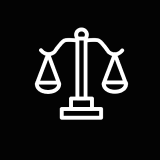You were injured at work, but for some reason the workers’ compensation insurer has denied your claim. At this time, you are now faced with a question that many injured workers face. What do I do now? A majority of these injured worker’s retain an attorney to assist them in fighting for their entitlement to work comp benefits. From that point on, the litigation portion of the Minnesota workers’ compensation system begins. The following is a brief summary of the litigation process for Minnesota workers’ compensation cases.
When an injured worker has been denied work comp benefits, an action to recover benefits is typically initiated by the filing of a “Claim Petition.” A Claim Petition provides various information including date of injury, benefits claimed, nature of the injury, etc. Supporting documentation for the claims typically accompany the Claim Petition. If an injured worker is in “significant financial hardship”, the employee may request an expedited hearing based on financial hardship.
Following the filing of a Claim Petition, the employer and insurer must file an “Answer” to the Claim Petition. The Answer is a written response which must include admissions or denials to the claims and include any affirmative defenses.
Once the initial pleadings or documents have been filed with the Minnesota Department of Labor and Industry (DOLI) the next stage is the “discovery process.” Discovery is an opportunity for all parties to obtain information necessary for the prosecution or defense of their case. Typically, the employer and insurer will request signed authorization from the injured worker to obtain various records including medical and wage records. The employer and insurer may also decide to take the injured worker’s deposition.
Additionally, an employer and insurer have a right for the injured worker to undergo what is called an Independent Medical Examination (IME). In certain cases, an employer and insurer may also request an Independent Vocational Evaluation if the injured worker claims that their ability to earn has been reduced by the injury.
During the discovery process, the injured worker and her attorney are also afforded an opportunity to obtain records from the employer, conduct depositions of experts and relevant parties and request medical records.
After the discovery process has been completed a “settlement conference” is typically requested by the parties and scheduled at the Office of Administrative Hearings (OAH). This conference is a way for the parties to get together and discuss settlement of the case. If the case cannot be settled, the matter is then “certified” for a formal hearing before a compensation judge.
Prior to hearing, a “Pretrial Conference” is typically scheduled. At the Pretrial, the parties discuss the claims being made along with any defenses to those claims. This allows all parties including the compensation judge an opportunity to discuss what the specific issues will be at the time of hearing. Additionally, the hearing location will be decided and will be dependent upon the parties location and location of the injury.
The next step is the hearing. A hearing is held before a compensation judge (not a jury) who will determine the outcome of the case based on the evidence and facts of each matter. A record will be made which will be either digitally recorded or transcribed by a court reporter. Everything said in the courtroom will be recorded. Also, exhibits will be marked and offered which may include medical records, wage records, employment records, etc. After introduction of exhibits, a brief statement may be given by the parties outlining their position. From there, witnesses are called and testimony is given. After all the witnesses testimonies, a closing statement may be given by the parties. Following the conclusion of the hearing, the compensation judge will issue a written decision.
For more information about a Minnesota workers’ compensation hearing, take a look at my post here.
If after a decision a party wishes to dispute the findings, the aggrieved or losing party may file for an appeal with the Minnesota Workers’ Compensation Court of Appeals (WCCA). The notice of appeal must be made within 30 days after the decision from the compensation judge. Once the appeal has been made all parties are then required to submit written briefs outlining their positions and rational in either support or rejection of the compensation judge’s decision. Once the briefs have been submitted and arguments have been made, the WCCA will then issue a decision.
Lastly, in certain situations, the aggrieved or losing party may then appeal the WCCA’s decision to the Minnesota Supreme Court.
If you have been denied workers’ compensation benefits or need to discuss your Minnesota workers compensation case, we at the Law Office of Thomas Mottaz are workers’ compensation attorneys that help people with Minnesota work injuries anywhere in MN. Contact us for a free consultation and we will answer your questions or help you find the right lawyer for your situation.




